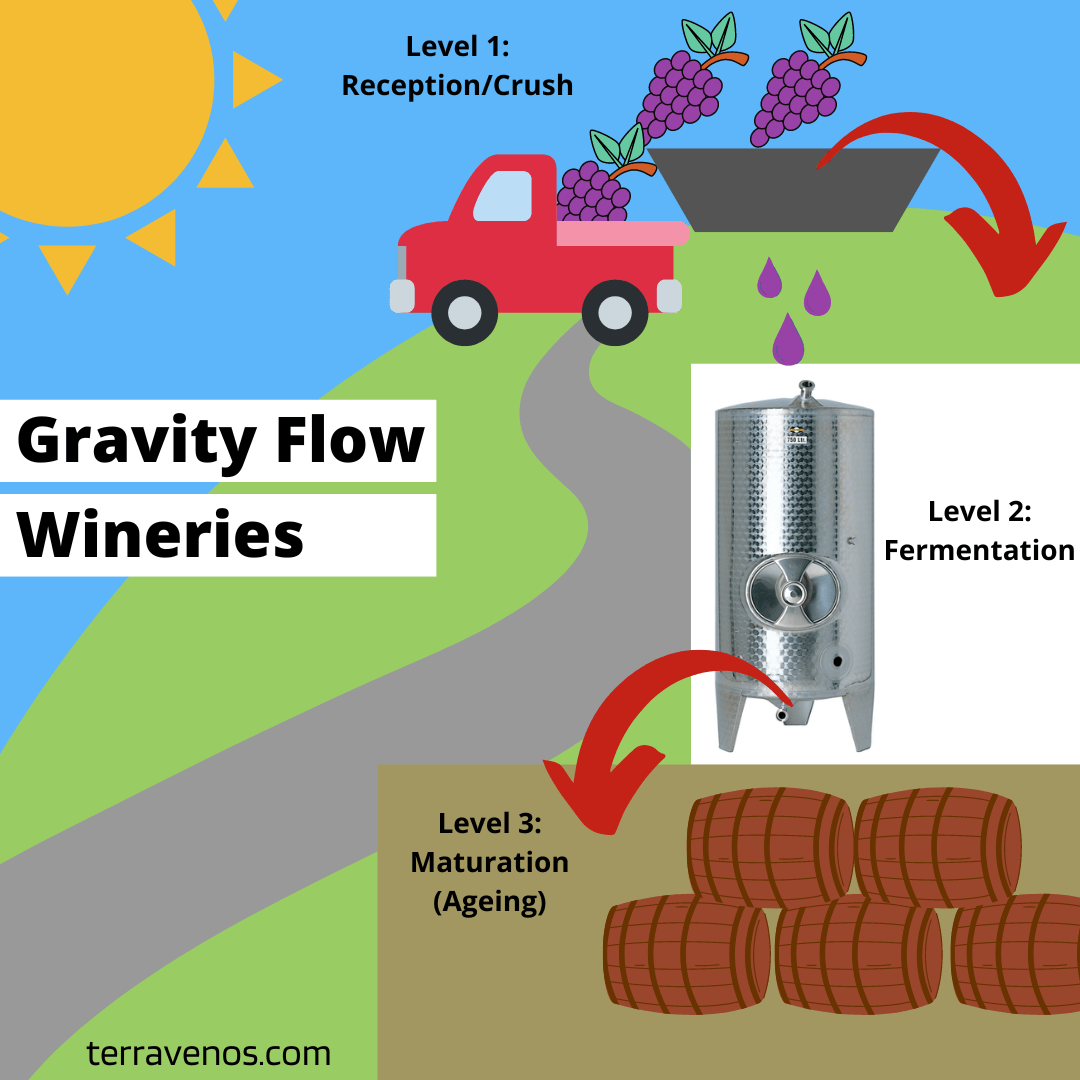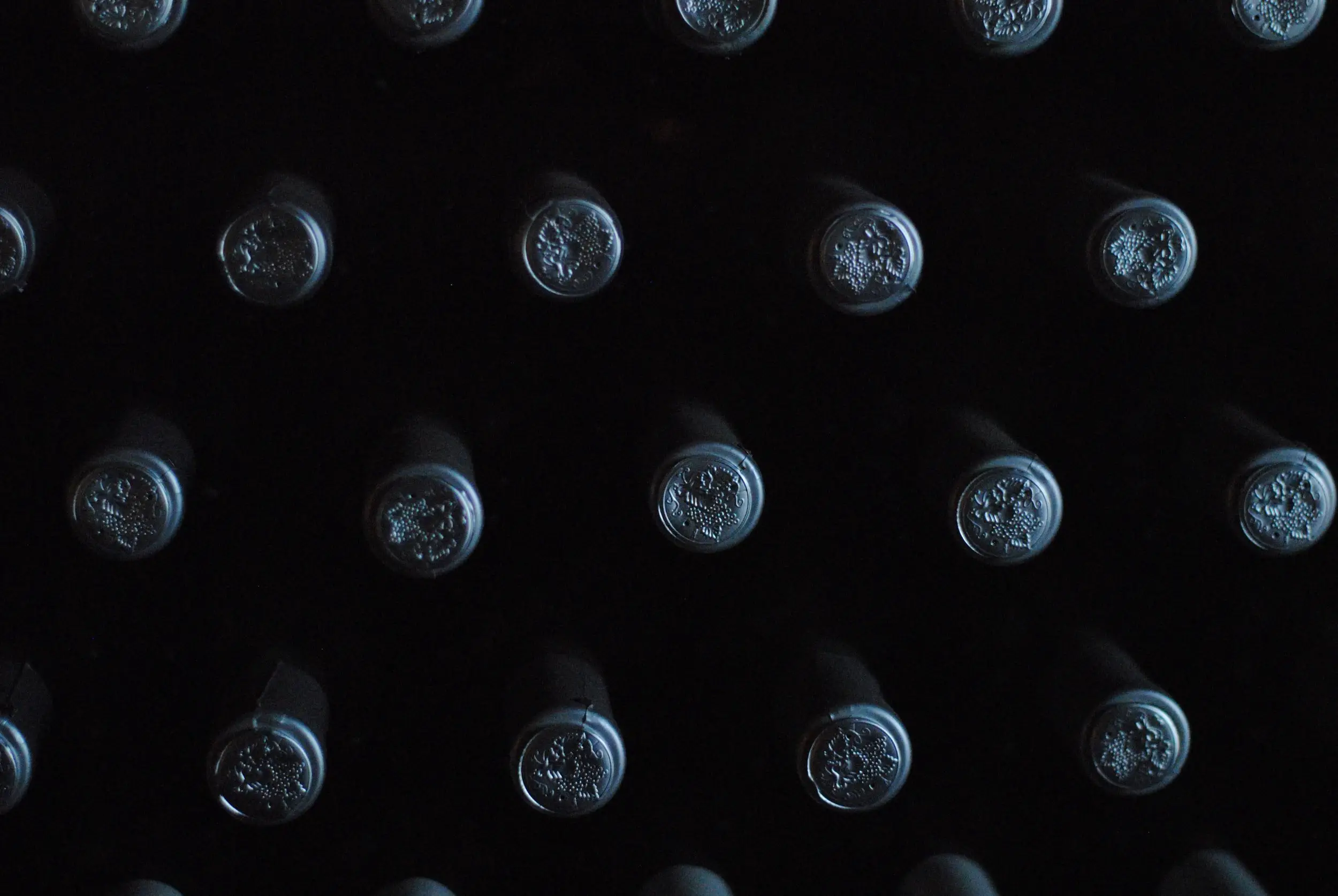
As someone who does small-scale winemaking in her garage, I admit that I spend an embarrassing amount of time thinking about the logistics of hauling grapes, moving juice, and transferring wine. Gravity flow winemaking appeals to me.
Gravity flow wineries use architecture for gentle, gravity-based winemaking. This process yields aromatic wines with less oxidation and a smaller carbon footprint. Note: “gravity flow wine” isn’t regulated, so anyone can put the term on a wine label.
The huge physical task of moving wine while making wine isn’t a new issue. People have made wine for thousands of years and thought about the same problems.
- Gravity Flow Winemaking
- How Does Gravity Flow Winemaking Work?
- What Makes Gravity Flow Wineries Special?
- What’s the Downside of Gravity Flow Winemaking?
- What Does ‘Gravity Flow’ Mean on a Wine Label?
- Thirsty for More?
Gravity Flow Winemaking
To state the obvious, gravity only works if an object needs to move from a starting point that is physically higher (above) than the ending point.
In the case of winemaking, this means liquid flows from a vessel that sits above another receptacle.
So, for example, the crusher-destemmer sits above the fermentation tanks, which sit above the maturation vessels (oak barrels or stainless steel tanks).
People have been using gravity in winemaking for thousands of years.
I love reading archeological discoveries that detail out the troughs where people would stomp on the grapes.
The troughs come with tiny outlet holes that allow the crushed juice to gush forth into channels that siphon off the wine into a clay dugout or clay jars that were used for fermentation.
Today, gravity flow wineries are more sophisticated but rely on the same principles to move their wine.
How Does Gravity Flow Winemaking Work?

Gravity fed wineries have several stories, or levels, where distinct winemaking activities take place.
- Level 1: The top level will have a grape reception area where workers sort the grapes and move them into the crusher.
- Level 2: The second level will have fermentation tanks to turn the grape juice into wine.
- Level 3: The next level has maturation vessels. These could be stainless steel tanks or oak barrels. From here, the winery will bottle and ship their wine out to you, their thirsty customer.
Many producers that use gravity fed winemaking facilities capitalize on geological formations like hillsides or mountains.
Other producers in valleys may build down below ground.
Gravity flow wineries require thoughtful architectural design.
Gravity flow wineries can cost more than a traditional winery that only occupies a single story.
What Makes Gravity Flow Wineries Special?
I’m not sure if gravity flow has a significant effect on the wine; though, in theory, the process is gentler on the wine meaning your gravity flow wine may have more pronounced aromatics and less chance of accidental oxygen exposure.
Perhaps of greater interest is the fact that winemaking using gravity flow will eliminate the energy needed to move wine using pumps.
All other factors being equal in the process, gravity fed wineries make your wine a little more green and better for the environment.
What’s the Downside of Gravity Flow Winemaking?
Your wine should be aromatic and you use less energy, what could possibly be the downside of gravity flow wineries?
Well, thanks to the multi-level processing facility, the cellar crews, or workers, use more physical energy climbing stairs and ladders and moving between levels to work on the wine.
This may or may not be a human factor to consider.
Winemakers and cellar rats are getting those steps in!
What Does ‘Gravity Flow’ Mean on a Wine Label?

If you see the term ‘gravity flow’ on a wine label, you should know that:
Gravity flow is not a legally controlled term.
This means that an unscrupulous producer could slap it on the label or marketing material in the hopes of getting you to purchase their wine.
Technically, they could have a bucket underneath the crusher-destemmer that collects the juice run-off and dub the set-up “gravity flow”.
Sneaky.
Wineries that design their processing facilities around gravity flow will likely have significant funds to produce a premium product, so assuming that the label claims are legitimate, expect these wines to be of excellent quality.
Thirsty for More?
Here’s a great post on What Is Unfined Unfiltered Wine? – another term that comes up on wine bottles that’s worth knowing about.
And here’s a fun post that explains What’s the Difference Between Free Run and Press Wine?



